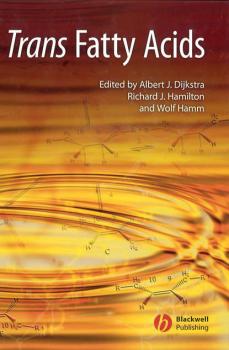ТОП просматриваемых книг сайта:
Wolf Hamm
Список книг автора Wolf HammАннотация
Trans fatty acids (TFAs) have been used for many years to impart desirable physical characteristics to fats and fat blends used in food manufacturing. However, clinical trials and epidemiological studies conducted over the last thirty years have shown that TFAs can increase “bad” cholesterol levels in the blood while reducing “good” cholesterol. Accordingly, they are also linked with increased risks of coronary heart disease, thrombosis and strokes. For this reason, the food industry has been obliged to find alternatives to TFAs, thus enabling it to meet the presumed consumer demand for “low” or “no” trans fats products. The issue is becoming more and more pressing. For example, US labelling regulations now require that food manufacturers state the trans fat content of their products on the packaging. This book provides an overview of trans fatty acids in oils and fats used in food manufacture. Topics covered include: the chemistry and occurrence of TFAs; analytical methods for determining the fatty acid composition including TFAs of foods; processing techniques for reducing, minimising or even avoiding the formation of TFAs; TFA alternatives in food; health and nutrition concerns and legislative aspects. It is directed at chemists and technologists working in edible oils and fats processing and product development; food scientists and technologists; analytical chemists and nutritionists working in the food industry.
Аннотация
Oils and fats are almost ubiquitous in food processing, whether naturally occurring in foods or added as ingredients that bring functional benefits. Whilst levels of fat intake must be controlled in order to avoid obesity and other health problems, it remains the fact that fats (along with proteins and carbohydrates) are one of the three macronutrients and therefore an essential part of a healthy diet. The ability to process oils and fats to make them acceptable as part of our food supplies is a key component in our overall knowledge of them. Without this ability, the food that we consume would be totally different, and much of the flexibility available to us as a result of the application of processing techniques would be lost. Obviously we need to know how to process fatty oils, but we also need to know how best to use them once they have been processed. This second edition of Edible Oil Processing presents a valuable overview of the technology and applications behind the subject. It covers the latest technologies which address new environmental and nutritional requirements as well as the current state of world edible oil markets. This book is intended for food scientists and technologists who use oils and fats in food formulations, as well as chemists and technologists working in edible oils and fats processing.


